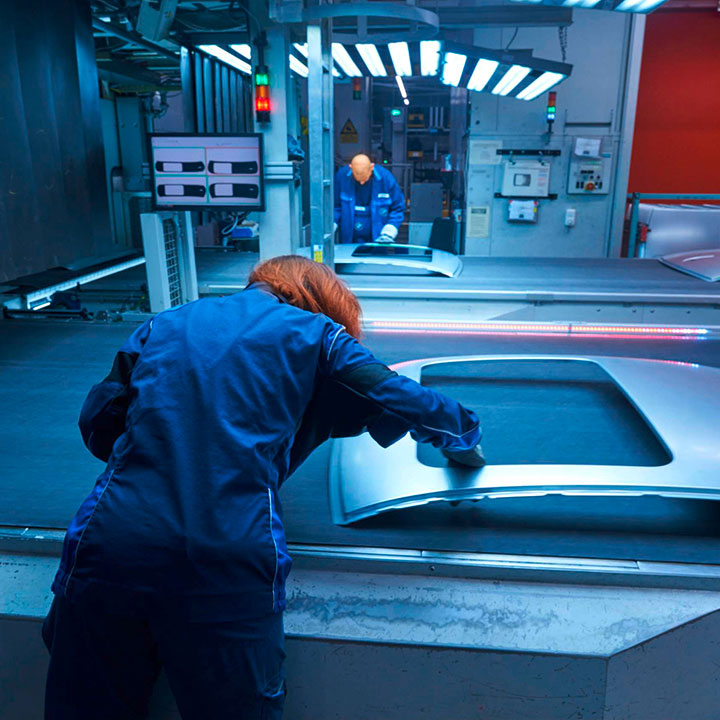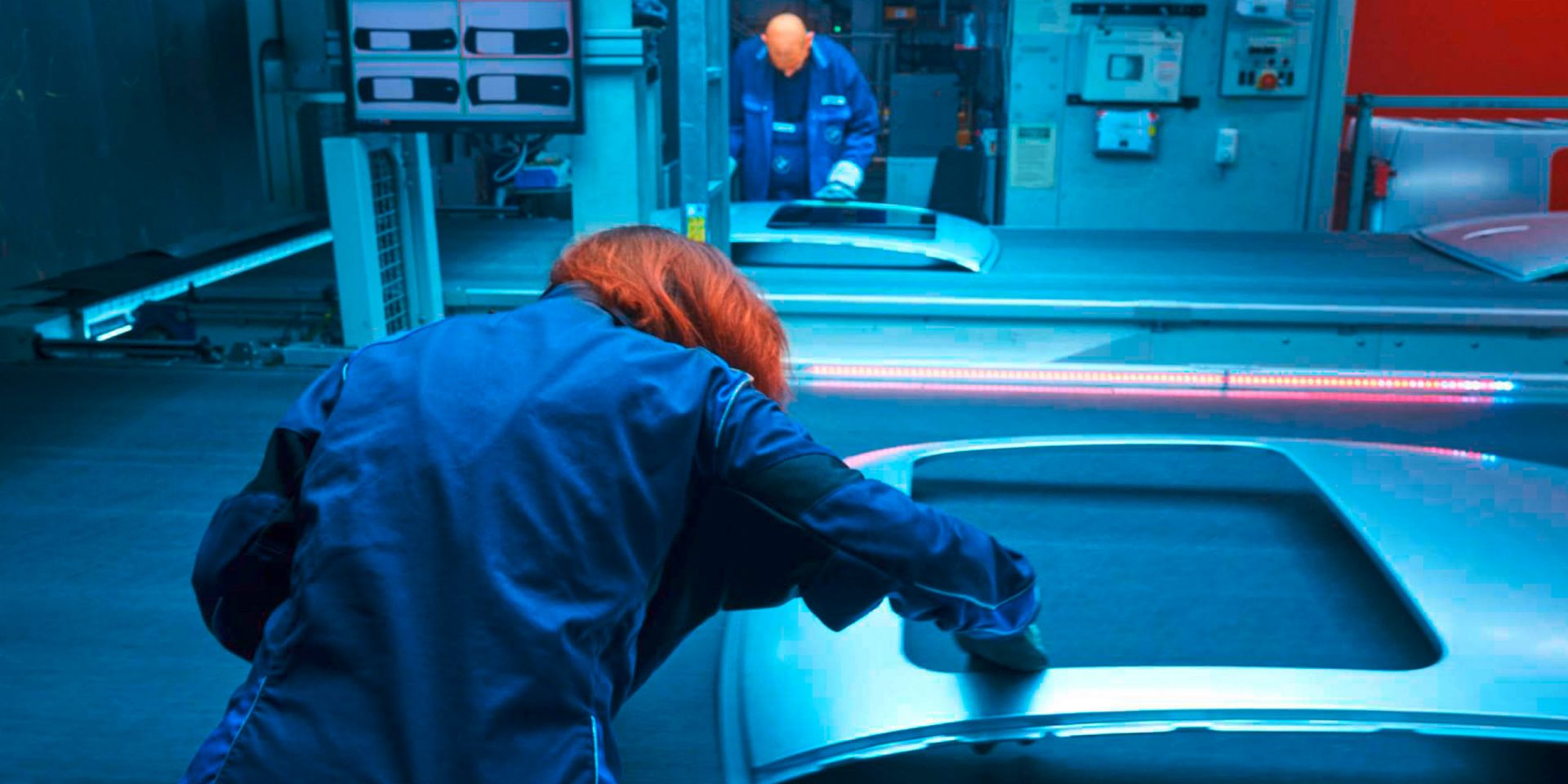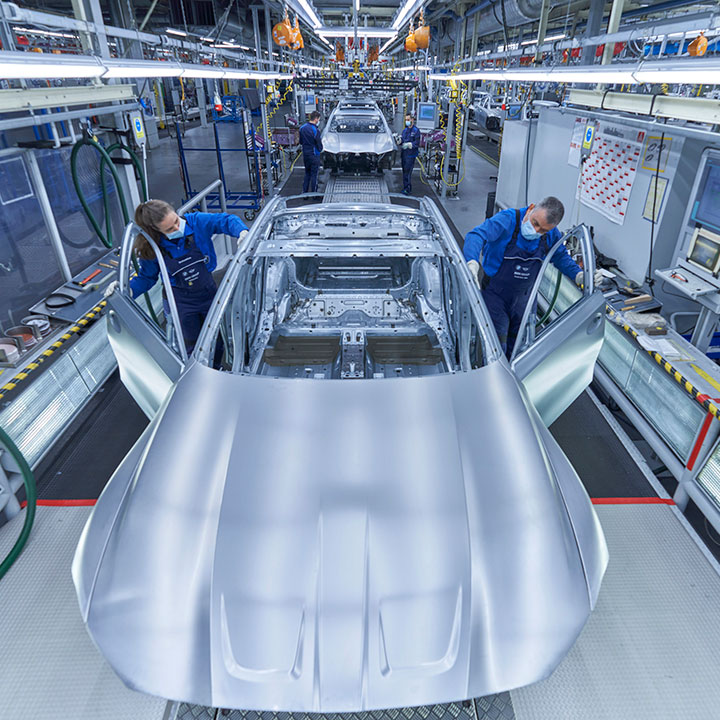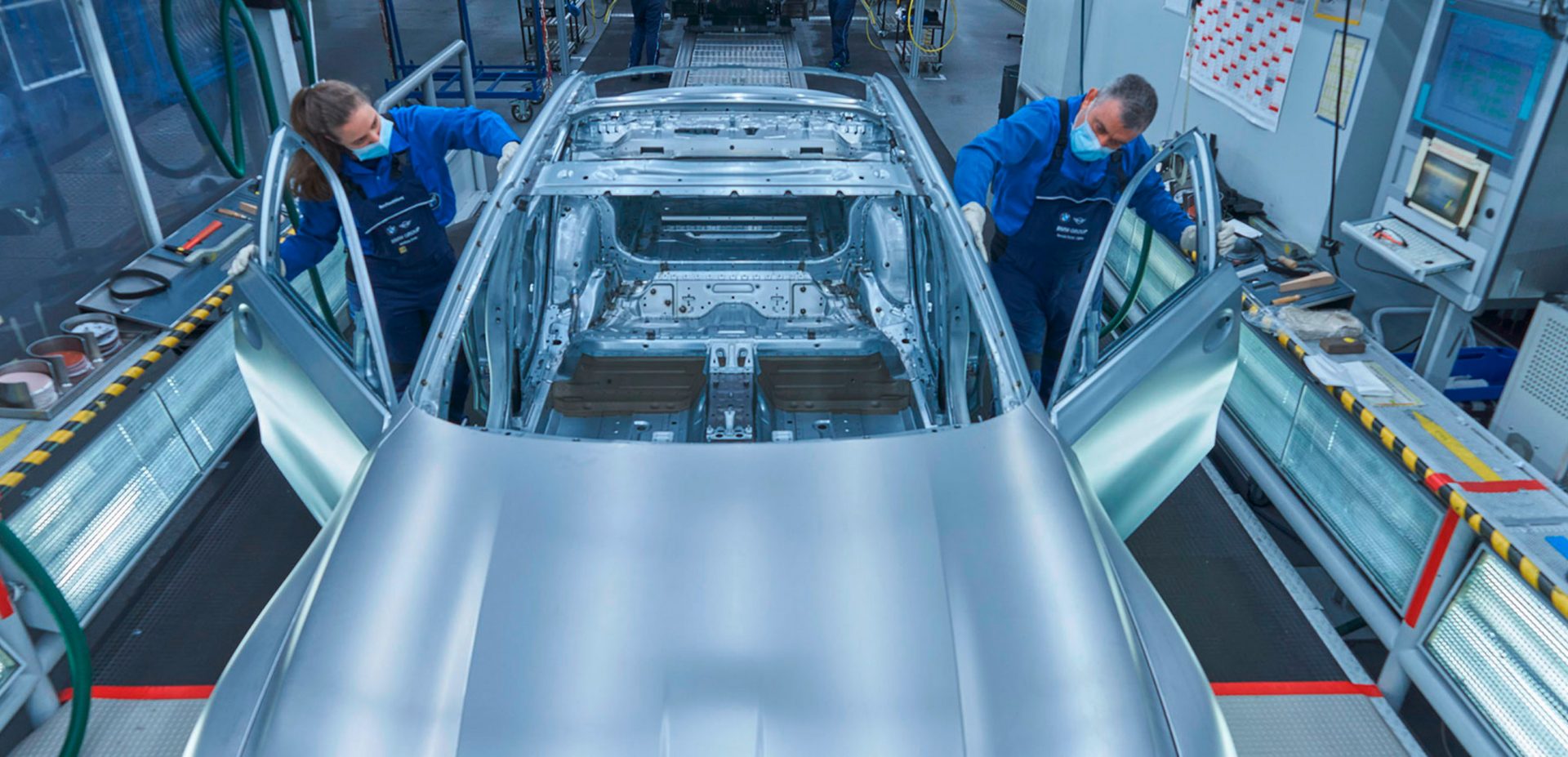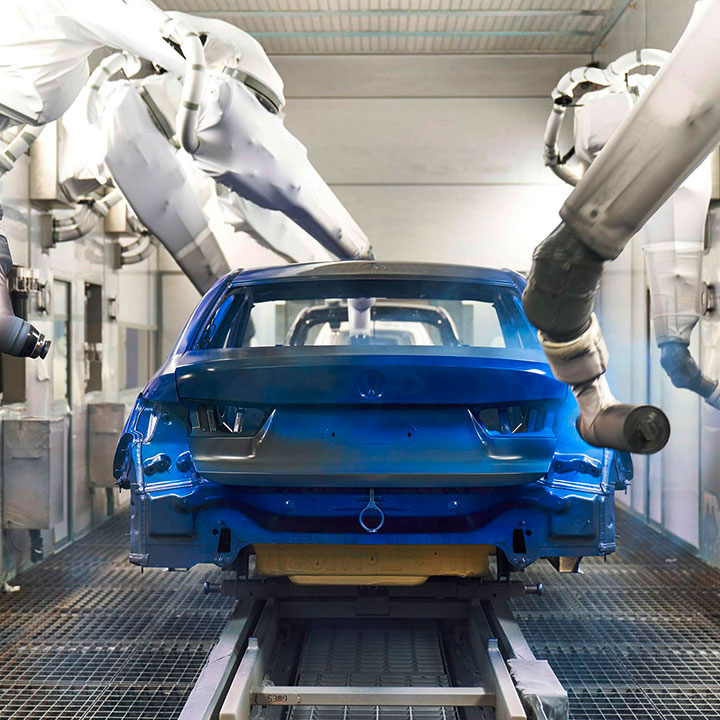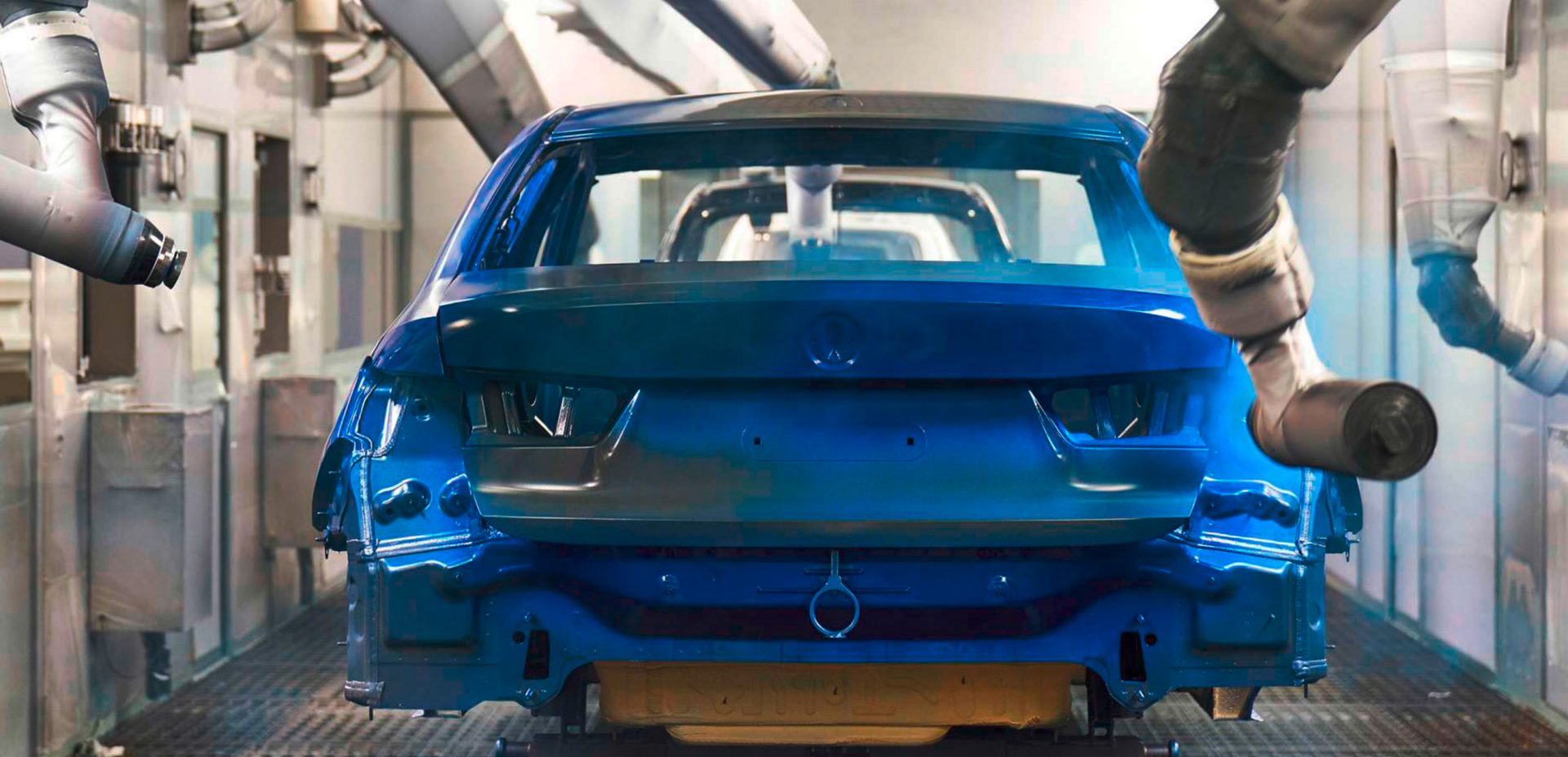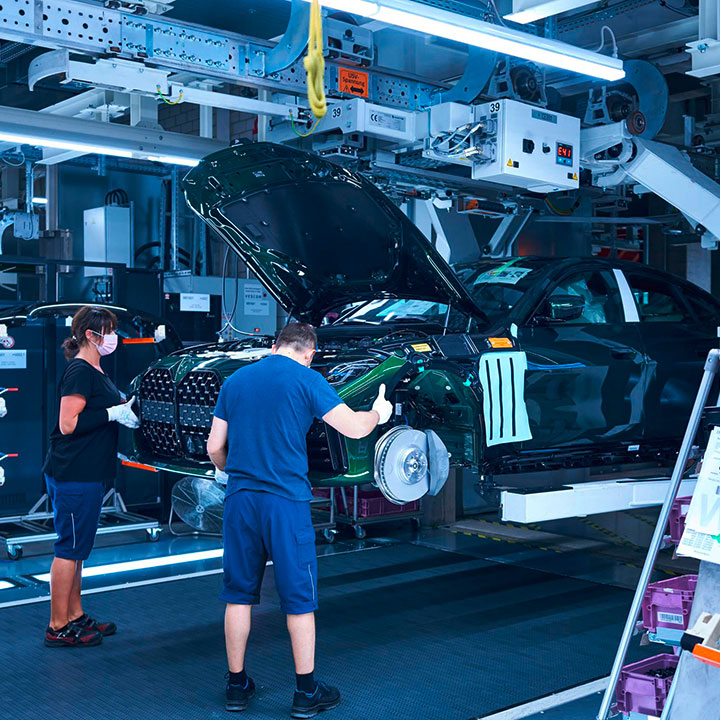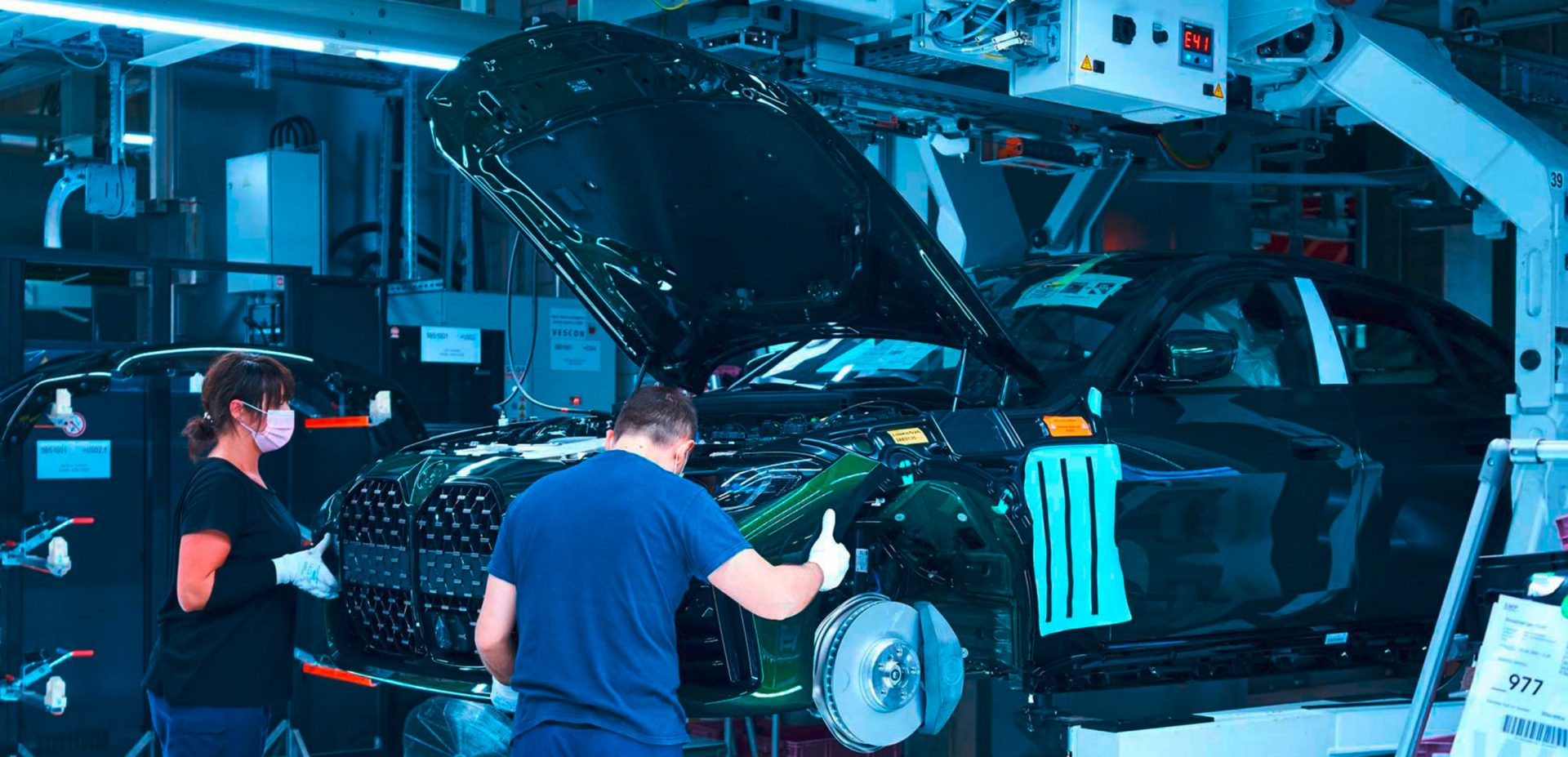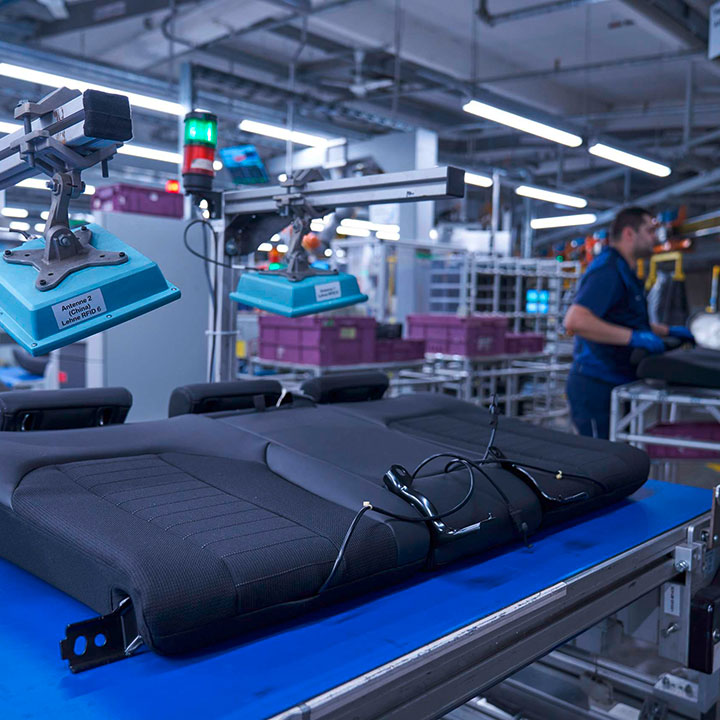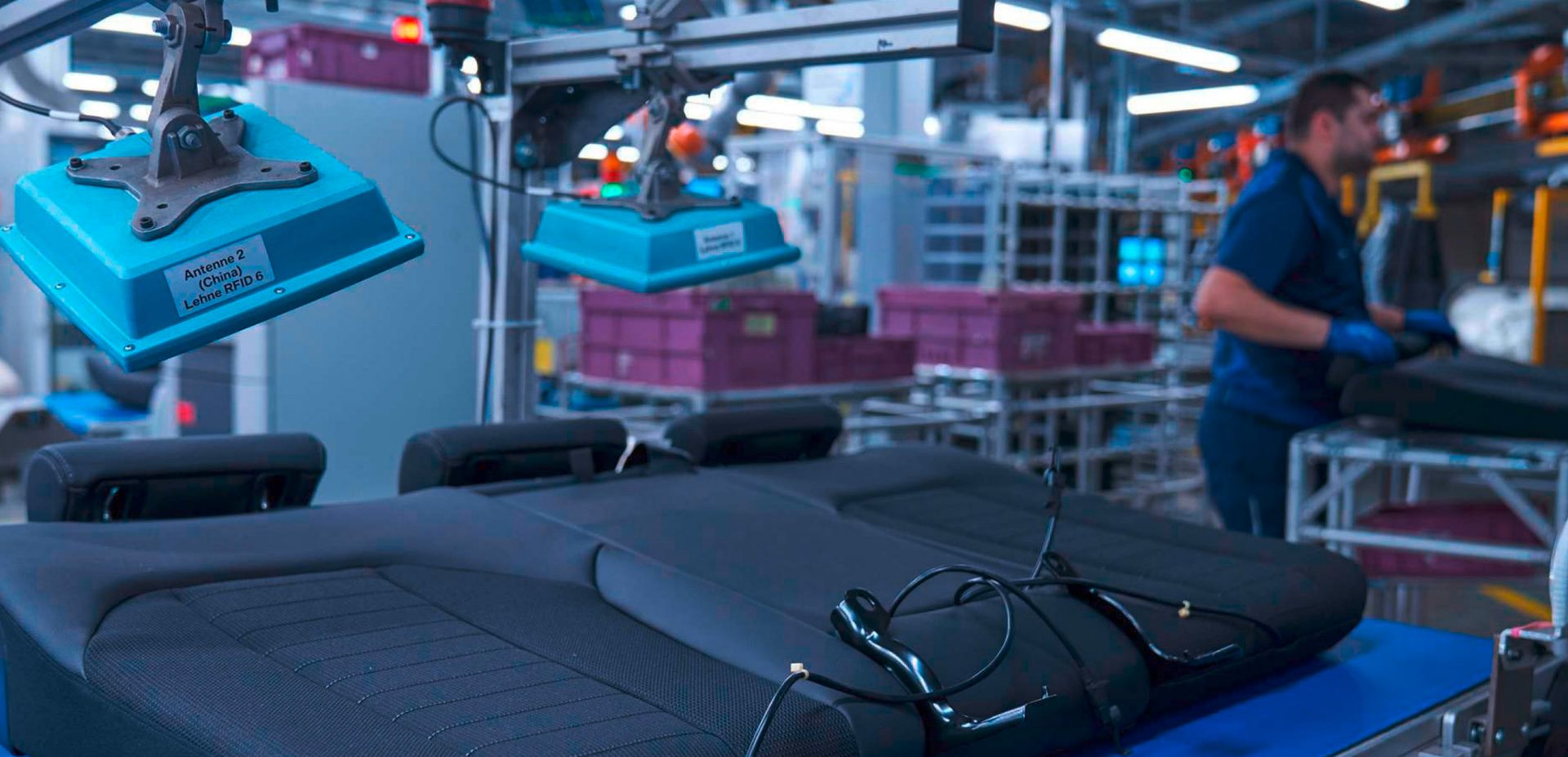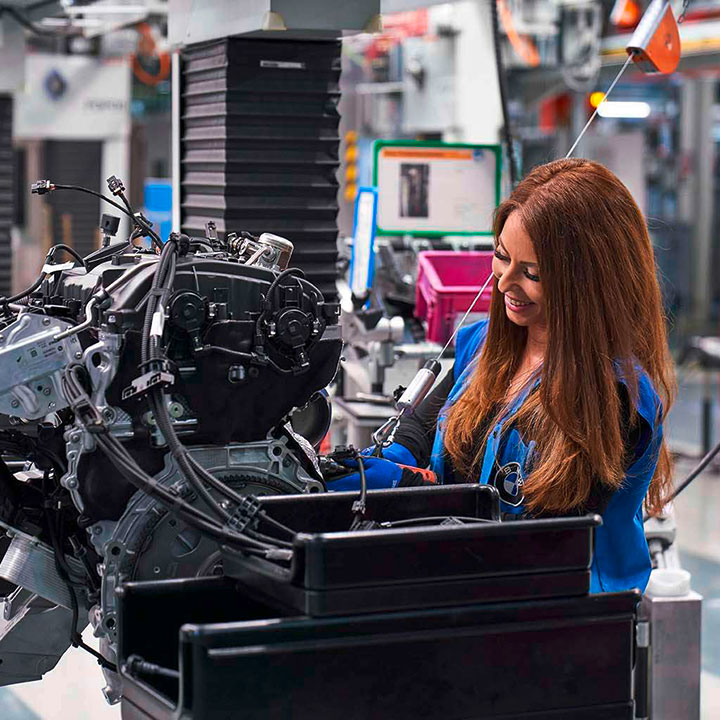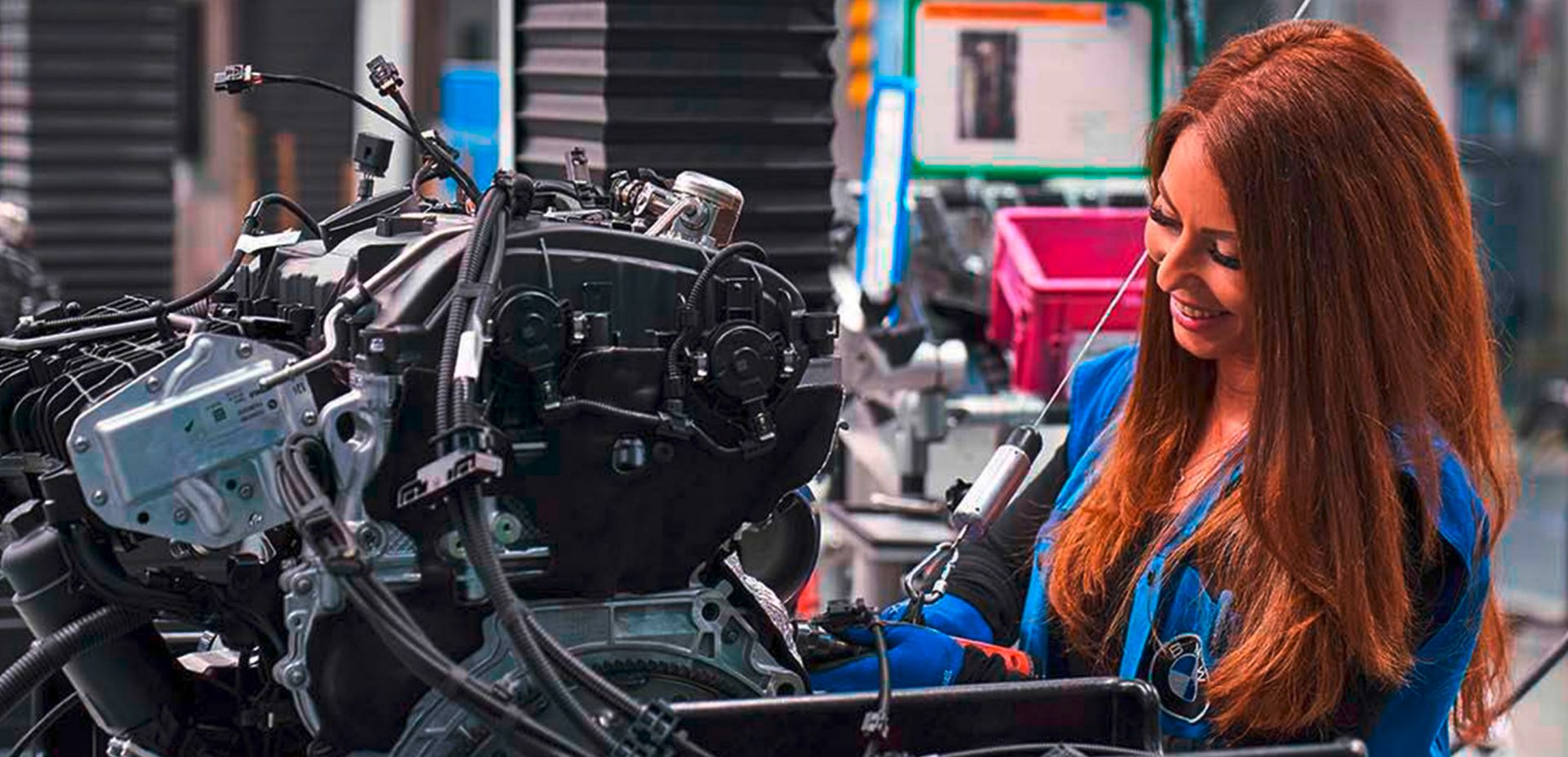The production of a car starts here in the press shop. Every day, we produce over 32,000 car body parts. In the press lines, sheet steel passes through several process steps to receive its final shape. We only use galvanized sheet metal, a first measure to protect cars from corrosion. The presses fully automatically draw, bend and punch the sheet steel in several steps to give it the desired shape. The car body of a BMW 3 Series comprises over 400 different pressed parts – from the tank cap to the side frame. 20 different kinds of steel, ranging in sheet thickness from 0.7 to 2.2 mm, are processed.
At the heart of the press shop is a state-of-the-art high-speed servo press line which works at 17 strokes/minute. This facility processes about the same amount of steel in only twelve days that was required to build the Eiffel Tower.
The workforce of the press shop consists of about 400 highly qualified people in production, quality assurance, maintenance, and logistics.
Press lines are fully automated, and a team of specialists – electricians, mechanics, toolmakers, logistics and quality assurance experts – takes care of the facilities. My colleagues and I steer, program and check the machines and tools as well as pressed parts and their quality. The entire process makes highly efficient use of material, and the recycling rate stands at an impressive 99 percent.



